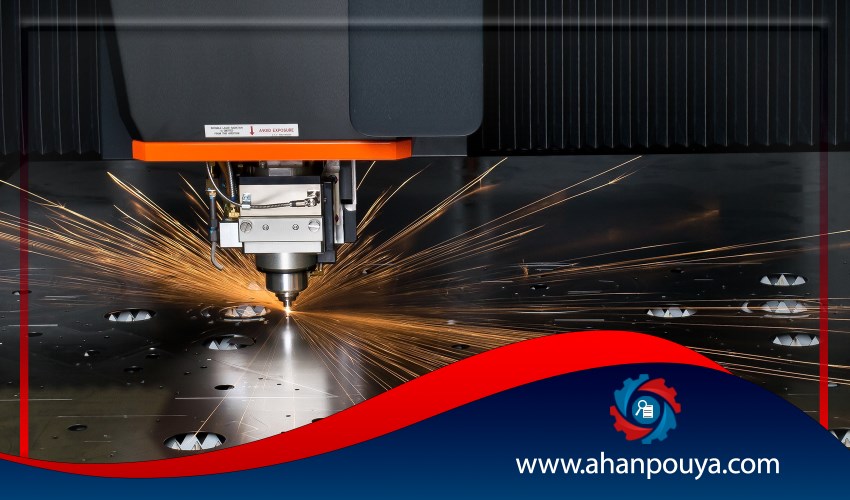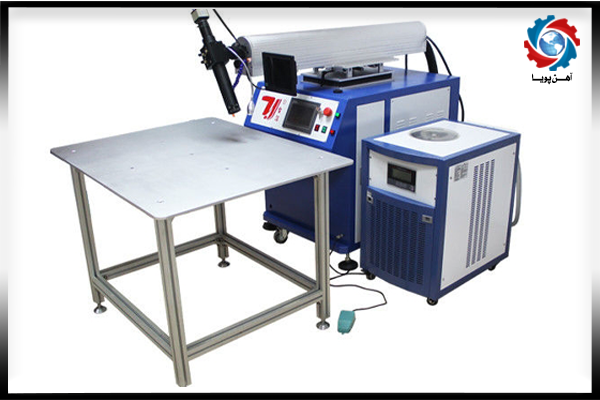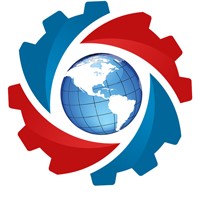
Laser welding is one of the modern methods of melting welding .
Working with metal is also exciting as well as laser welding is one of these enjoyable arts . when the spark flies and the heat rises , welders are capable of converting the strongest metals in the world into the forms and products you imagine . The welding industry always has many fans and can create jobs in different fields . Having plenty of experience in the kinds of welding methods , graduates can open up many paths when they start looking for work .
Welding methods can be classified in a way that is used to produce welding heat and feed fillers in welding .
The welding technique used is selected based on the following :
- Welding materials & thickness of materials
- Required production output
- Desired visual quality
Common welding methods are classified into the following types :
- Electric arc welding
- Resistance welding
- Solid welding
- Gas welding
- Laser welding
- Electron - ray welding
In the following we will explain more the details of laser welding .
The word laser is abbreviation for Light Amplification by Stimulated Emission of Radiation . The story of the laser technology began in the early 1900 s with Albert Einstein . He created the base of laser technology when he predicted the phenomenon “stimulated emission” which is essential to all lasers application . The technology was later completed in 1960 .
● Laser welding is one of the modern methods of melting welding . High speed and precision and high accuracy are some of the factors that extend the application of this welding process in different industries . With the high – ray radiation of laser energy at the desired level , the heat required for the creation of melt pool and the connection process is provided .
CO2 laser is more efficient than the ruby laser . These factors have turned it into the most popular kind of laser for over 50 years .
The first Co2 laser , produced in 1964 , only had a milli watt output power . By 1967, CO2 lasers were produced using more than 1,000 Watt.
The laser beam is divided into two categories based on the source of its producing source :
● Gas laser : In this group , the laser producing equipment is embedded in a compartment . A small amount of CO2 and neutral gas is placed into a compartment and the potential difference is made within the gas compartment , so that the gas flares and the beam emits light .
The light emitted is between the two mirrors and the intensity of it reaches a point where the second mirror passes and the laser is produced . After the second mirror , a lens is embedded with the task of focusing the productive rays .
● Solid laser : In this group , instead of mixtures of gas , a solid core is used . This core is known as YAG laser .
Some of the advantages of the welding process with laser beam are : This method is applicable to different materials because it does not have to be a conductor of electricity . The laser covers a wide range of energy ranges and is therefore convenient to control the resulting energy and use it . The range of the thickness of the components that can be welded with this method is very wide , consisting of at least 0.01 inches thick . The welding tome is very short and filler material does not exist .

Some of the limitations of welding process with beam are : The precise control of the device position is necessary to the laser beam because its width is too narrow . Welding of some metals that have high reflection capability is difficult to do with this method . Increasing the speed of welding in this technique may result in cracks or brittle structure .
If the production energy is high , there is a possibility of plasma creation . Therefore , protection against plasma is required . To solve this possible problem , one must either use low powers to generate lasers , or use helium gas in the gas laser technique .
The major applications of laser beam in the connection industry are
- Welding
- Soldering
- Cutting
A laser welding is a non - contact process that requires access to the weld zone from one side of the welded parts . The weld is made while the intense laser light heats the material quickly , which is usually calculated in milliseconds . The laser beam is a coherent light ( single – phase )of a single wavelength ( monochrome ) . It has low beam divergence and high energy content , thus creating heat when dealing with a surface .
This type of welding can be compared with the beam of sunlight . A laser beam is concentrated and directed by light lenses and certain mirrors .
This can be at a considerable distance from the work piece .
When using a laser beam for welding, the electromagnetic radiation interacts with the energy concentration at the base metal surface so that the temperature of the melt surface melts and melts the following metal . The laser can interact with any material, does not require a vacuum and does not produce x – ray .
There are several types of lasers which can be used for welding including fiber lasers , pulse lasers Nd:YAG , continuous wave laser . Of course , you need to know that the type of laser welding solution depends on the application you need . Laser welding professionals can help you choose the best kind of welding for your welding .
- High Accuracy
- Ability to create complex links with laser welding
- Low heat usage
- Suitable and repetitive welding points by laser welding
- High resistance welding

Ahan Pouya with more than a decade of best-selling experience, adheres to professional and ethical principles in the field of selling and buying at inside and outside the borders of Iran, helping you in the steel industry.